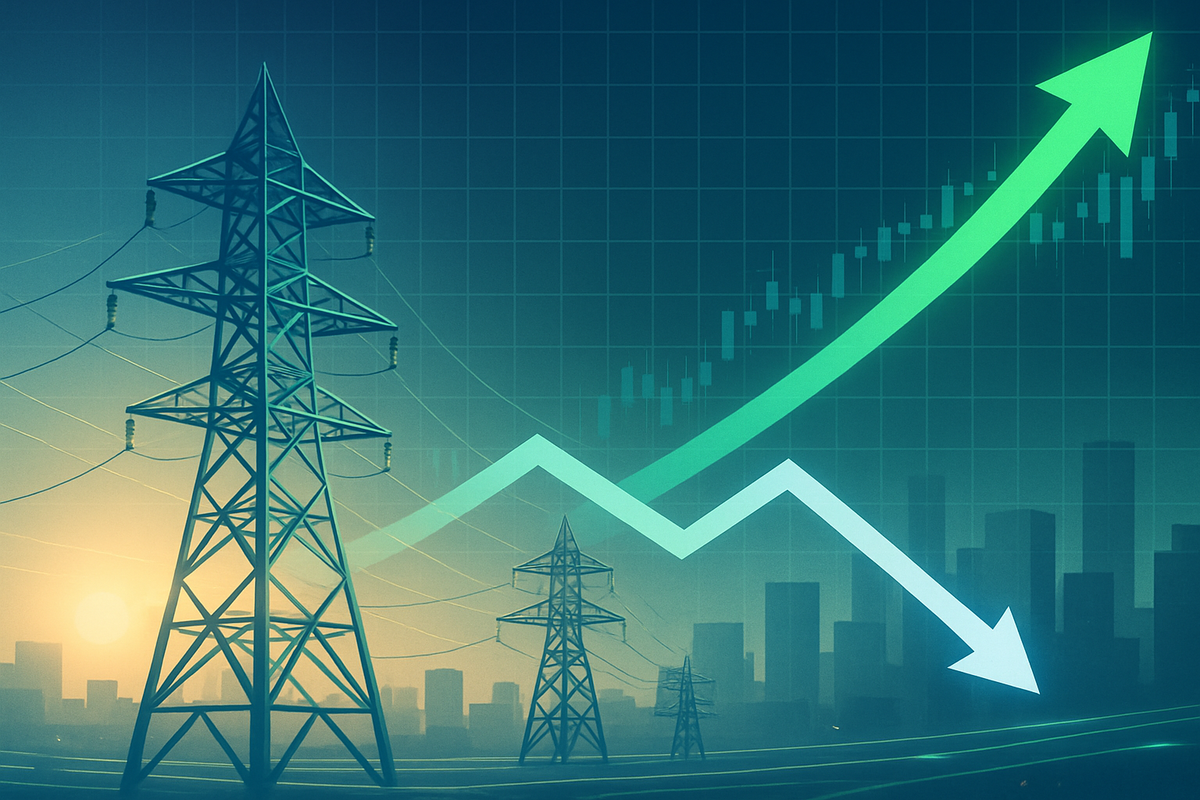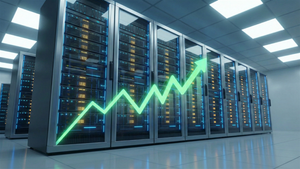
San Francisco, CA – October 3, 2025 – In a significant move for the utility sector, Jefferies today announced a revision to its price target for PG&E Corporation (NYSE: PCG), lowering it from $22 to $20. Despite this adjustment, the investment bank reiterated its "Buy" rating on the California-based utility, signaling continued confidence in the company's long-term prospects. The announcement comes as PG&E's shares were trading around $15.63, reflecting a notable gap between the current market price and Jefferies' revised target.
This recalibration by Jefferies underscores a nuanced view of the utility giant, acknowledging certain pressures while emphasizing underlying strengths. The maintained "Buy" rating suggests that analysts at Jefferies perceive the current valuation as attractive, believing the company possesses a favorable risk/reward profile that warrants investor attention despite the modest reduction in its target valuation.
Jefferies' Rationale: A Deeper Dive into PG&E's Valuation
Jefferies' decision to lower the price target for PG&E (NYSE: PCG) on October 3, 2025, was accompanied by a detailed explanation that painted a picture of a utility firm navigating a complex regulatory and operational landscape. The firm highlighted PG&E as its preferred California utility, citing several compelling factors. Among these, Jefferies pointed to a better risk/reward profile for the company, particularly noting a lower prospective financial wildfire risk, a persistent concern for California utilities. This assessment suggests that ongoing mitigation efforts and legislative frameworks may be reducing the financial exposure from catastrophic events.
Furthermore, Jefferies projected an impressive 9% premium Earnings Per Share (EPS) Compound Annual Growth Rate (CAGR) through 2030, indicating robust financial growth ahead. The analysis also praised PG&E's conservative EPS guidance and the absence of immediate equity needs, which provides financial stability. Positive messaging regarding potential share buybacks further bolstered investor sentiment. Jefferies also observed that PG&E's price-to-equity ratio traded at a discount compared to its peers, presenting a value opportunity. However, the firm did acknowledge that "the path for positive legislative is not clear and may not be a panacea but reasonable outlook otherwise," indicating that while regulatory improvements are anticipated, they may not be a complete solution to all challenges. The stock's trading price of approximately $15.63 at the time of the announcement underscores the potential upside seen by Jefferies.
Market Implications and Company Dynamics
The adjustment in PG&E's (NYSE: PCG) price target, even with a maintained "Buy" rating, has immediate implications for the company and its stakeholders. For PG&E, the continued endorsement from a major investment bank like Jefferies, particularly as the "preferred California utility," offers a degree of reassurance to investors. The rationale provided by Jefferies—lower wildfire risk, strong EPS growth projections, conservative guidance, and potential buybacks—suggests that the company is on a path towards greater financial stability and operational efficiency following its past challenges. The discount in its price-to-equity ratio compared to peers could attract value investors looking for opportunities in the utility sector.
While the lowered price target might initially be perceived negatively, the context of a maintained "Buy" rating is crucial. It implies that Jefferies believes the stock is currently undervalued at its trading price of around $15.63, offering significant upside to the new $20 target. This could lead to increased investor interest and potentially a positive movement in share price as the market digests the nuanced analysis. For other utilities, particularly those operating in California or regions prone to similar environmental risks, PG&E's trajectory and Jefferies' assessment could serve as a bellwether, influencing how investors perceive and value their own risk mitigation strategies and growth prospects.
Broader Industry Trends and Regulatory Landscape
This development for PG&E (NYSE: PCG) fits squarely within several broader industry trends affecting the utility sector, particularly in states like California. The emphasis on "lower prospective financial wildfire risk" by Jefferies highlights the ongoing and critical challenge of climate change and its impact on infrastructure. Utilities are increasingly under pressure to invest in grid hardening, vegetation management, and advanced technologies to mitigate risks like wildfires, which have historically led to significant financial liabilities and even bankruptcies. PG&E's efforts in this area, and the market's perception of their effectiveness, are setting a precedent for how utilities can navigate and adapt to these new realities.
The mention of an unclear "path for positive legislative" but an "otherwise reasonable outlook" also underscores the intricate relationship between utilities and regulatory bodies. In California, the regulatory environment is particularly dynamic, with ongoing discussions around rate structures, wildfire liability, and energy transition policies. Investor confidence in utilities is heavily influenced by the predictability and fairness of regulatory frameworks. Any legislative clarity or support that reduces financial uncertainty, such as mechanisms for cost recovery or risk sharing, would be viewed positively. Historically, periods of regulatory uncertainty have led to volatility in utility stocks, making any signs of stability or progress highly significant for the entire sector and its partners, including renewable energy developers and infrastructure providers.
The Road Ahead: Strategic Shifts and Market Opportunities
Looking ahead, PG&E (NYSE: PCG) faces a landscape ripe with both opportunities and challenges. In the short term, the market's reaction to Jefferies' maintained "Buy" rating, despite the lowered target, will be closely watched. If the stock begins to trend towards the $20 price target, it could signal renewed investor confidence. Strategically, PG&E will likely continue to prioritize its wildfire mitigation programs, investing in undergrounding power lines, enhanced vegetation management, and advanced grid technology to further reduce risks and improve reliability. These efforts are not just operational necessities but also crucial for maintaining regulatory and public trust, which directly impacts the company's long-term financial health.
In the long term, the utility sector is undergoing a massive transformation driven by decarbonization goals, the integration of renewable energy sources, and the modernization of aging infrastructure. PG&E, as a major player in California, is at the forefront of these changes. Potential strategic pivots could include accelerated investments in battery storage, microgrids, and smart grid technologies to enhance resilience and integrate more intermittent renewables. These initiatives could open new market opportunities for the company, potentially attracting partnerships with technology firms and clean energy developers. However, challenges remain, including managing the costs associated with these transformations and ensuring that rate increases remain palatable to consumers and regulators. The success of these adaptations will largely determine PG&E's ability to achieve its projected 9% EPS CAGR through 2030 and solidify its position as a leading utility.
Key Takeaways and Investor Outlook
Jefferies' recent analysis of PG&E (NYSE: PCG) offers a nuanced perspective on the utility's current standing and future trajectory. The key takeaway is that while some recalibration of valuation metrics may be warranted, as indicated by the lowered price target, the underlying fundamentals and strategic direction of PG&E remain strong enough to warrant a "Buy" rating. The emphasis on reduced wildfire risk, robust EPS growth projections, and financial prudence suggests that the company is effectively addressing its past challenges and positioning itself for a more stable future.
Moving forward, the market will likely assess PG&E's performance based on its continued progress in wildfire mitigation, its ability to navigate the complex California regulatory environment, and its execution on growth initiatives, particularly in the realm of clean energy and grid modernization. Investors should closely monitor legislative developments concerning utility liabilities and rate-setting mechanisms, as these will significantly impact the company's financial outlook. Furthermore, any updates on share buyback programs could provide additional catalysts for the stock. Ultimately, Jefferies' analysis paints a picture of a company with a favorable risk/reward profile, making PG&E an interesting watch for investors seeking opportunities within the evolving utility sector in the coming months.
This content is intended for informational purposes only and is not financial advice.





